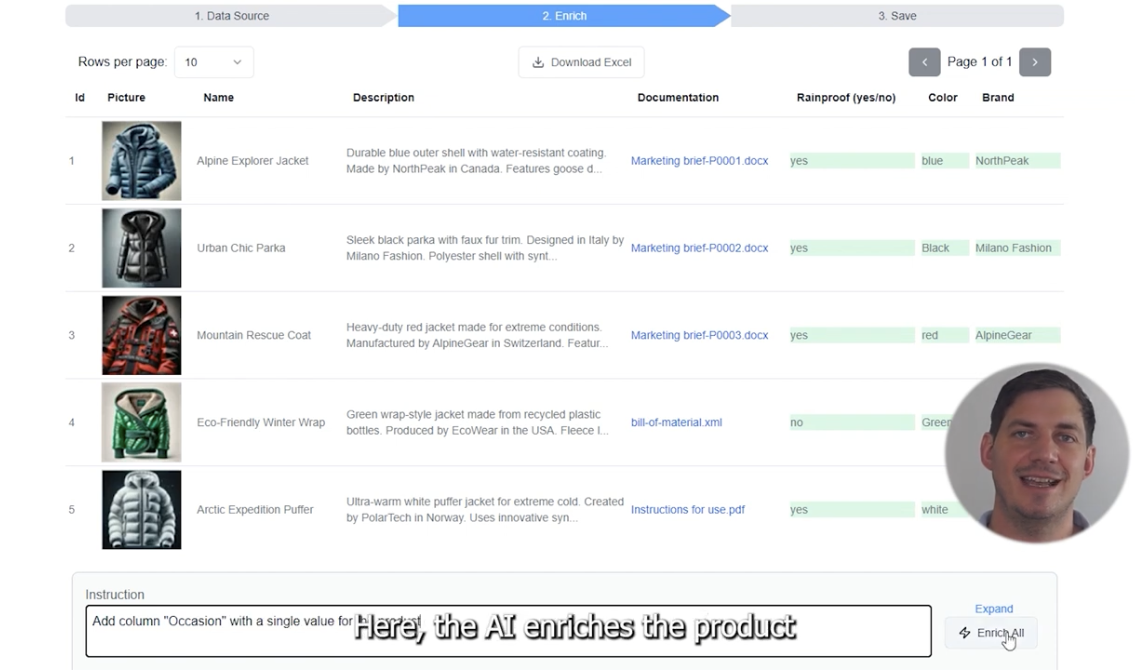The Configuration Complexity Crisis
💡 Strategic Prompt
"Your ERP system has 50,000 SKUs for what customers see as 200 furniture products. Each fabric choice, wood finish, and size creates a new item code. The manufacturing team can't find what they need, sales can't configure properly, and customers are confused by complexity that adds no value. How do you model configurable products so they work for humans, not just systems?"
The furniture industry exemplifies the configurable product challenge: unlimited customization possibilities must be balanced against operational complexity. Traditional ERP-driven approaches create exponential SKU proliferation that overwhelms every stakeholder while adding cost without value.
This case study examines how thoughtful data modeling can transform configurable products from an operational burden into a competitive advantage, enabling everything from bespoke design projects to efficient mass production.
Why Traditional ERP Configuration Fails
The SKU Explosion Problem
Traditional ERP systems create unique SKUs for every possible configuration combination:
- Sofa Model A: 3 sizes × 15 fabrics × 4 leg finishes = 180 SKUs
- Dining Table B: 4 sizes × 8 wood types × 3 edge profiles = 96 SKUs
- Office Chair C: 2 bases × 12 colors × 3 mechanisms = 72 SKUs
This exponential growth creates operational chaos across every department.
Impact on Stakeholders
Manufacturing: Cannot distinguish between structural differences and cosmetic variants, leading to unnecessary setup complexity and inventory confusion.
Sales: Overwhelmed by choice combinations, unable to guide customers effectively, frequent configuration errors.
Customers: Decision paralysis from too many options, confusion about what variations actually matter.
Design: Cannot iterate quickly when every change requires new SKU creation and system updates.
Hidden Costs
The real cost isn't just system complexity—it's organizational inefficiency, manufacturing overhead, inventory carrying costs, and lost sales from configuration friction.
Smart Data Modeling: Separating Structure from Surface
The Hierarchy Principle
Instead of creating SKUs for every combination, model products hierarchically:
Product Family: Sofa Collection (design intent, structural engineering)
Base Product: 3-Seater Sofa (frame, mechanism, core structure)
Configuration Options: Fabric, wood finish, cushion firmness (variants that don't affect manufacturing)
Structural vs. Cosmetic Attributes
Structural Attributes: Affect manufacturing processes, require different tooling or assembly
- Frame dimensions and joinery
- Mechanism types and mounting
- Structural materials (steel, wood, composite)
Cosmetic Attributes: Applied during final finishing, don't change core manufacturing
- Fabric selection and application
- Wood stain and finish
- Hardware color and plating
Benefits of Separation
Manufacturing plans based on structural attributes only. Sales configurators show meaningful choices. Inventory optimized for actual manufacturing requirements.
"The best furniture data models separate what matters for making from what matters for selling. When you model the structure correctly, everything else—from manufacturing to customer experience—becomes simpler and more efficient."
Foundational strategies and real-world implementations that enable effective configurable product management.
From Design to Production: Optimized Workflows
Design Project Workflow
Initial Configuration: Designers select base products and modify structural attributes as needed for project requirements.
Approval Process: Structural changes trigger engineering review; cosmetic changes auto-approve.
Manufacturing Planning: System generates production requirements based only on structural configuration, ignoring cosmetic variants until final assembly.
Mass Production Workflow
Demand Planning: Forecast based on base products, with cosmetic options as late-stage configuration.
Inventory Management: Stock structural components and common hardware; maintain smaller inventory of finishing materials.
Order Processing: Configure-to-order for cosmetics, make-to-stock for structural components.
Key Performance Improvements
- 75% reduction in manufacturing SKUs
- 60% faster new product introduction
- 40% reduction in inventory carrying costs
- 90% reduction in configuration errors


